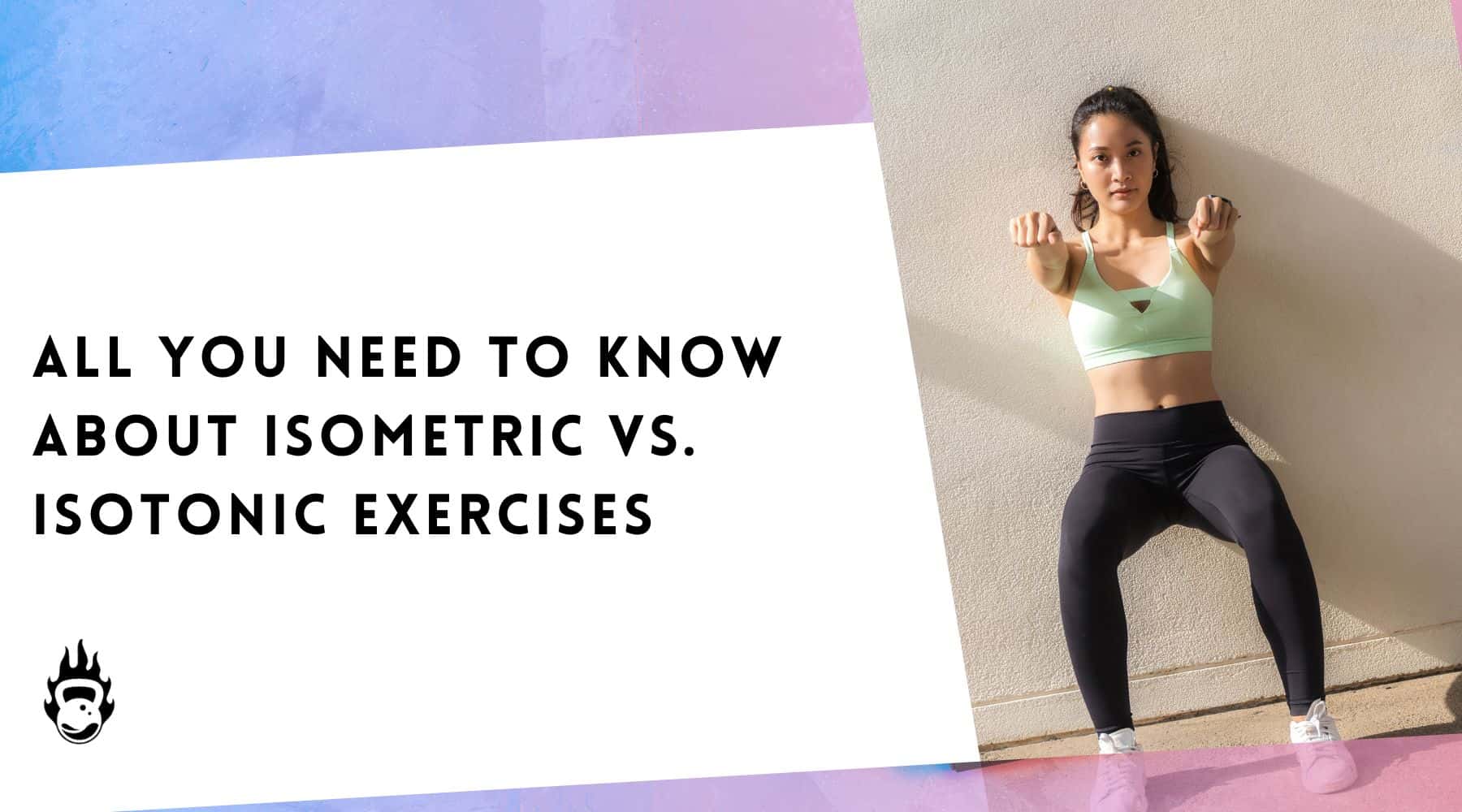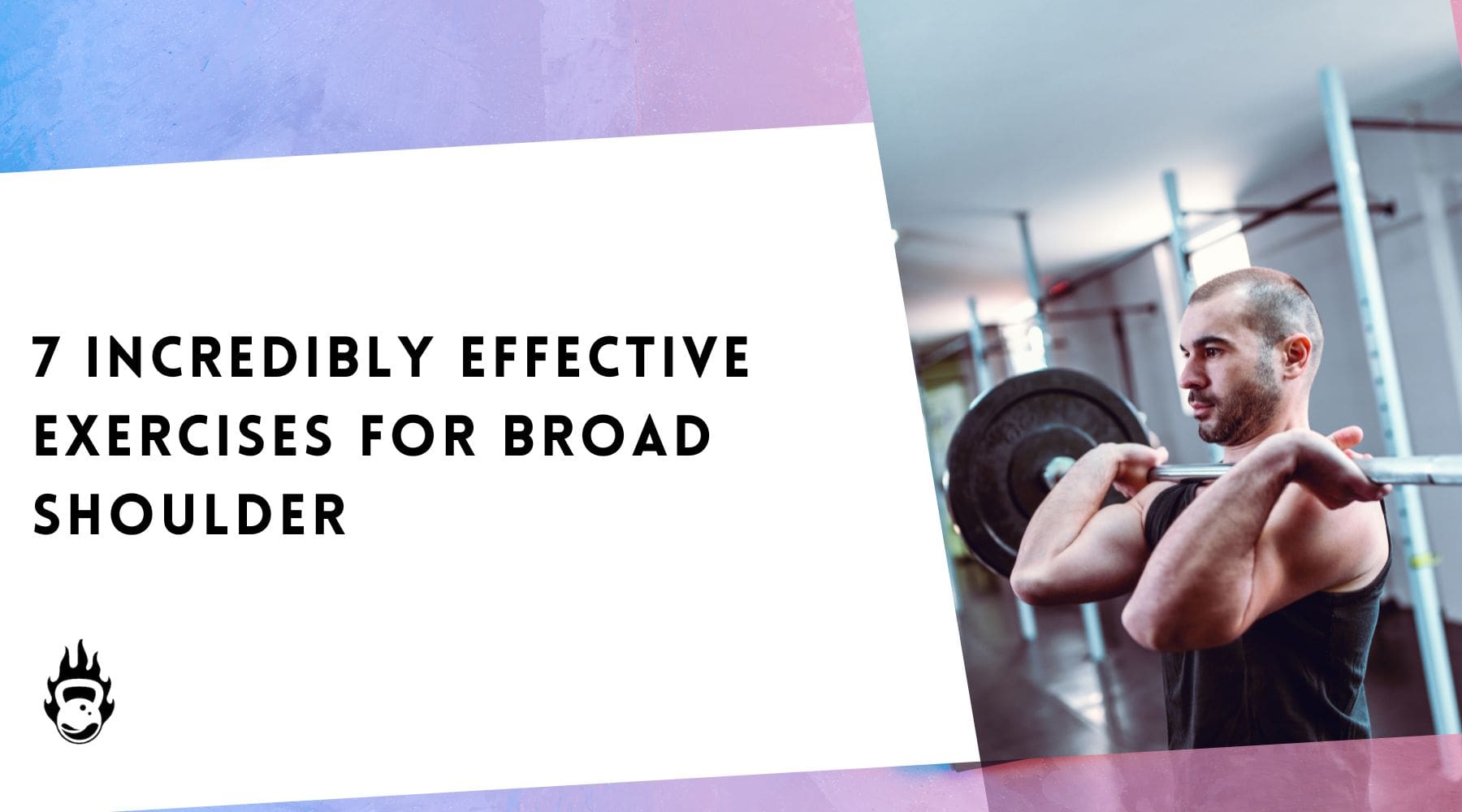All You Need To Know About Isometric vs Isotonic Exercises

Isometric vs. isotonic exercise.
Maybe you’ve heard of these terms but are not really sure what they mean.
But here’s the thing. Likely, you are already doing them, but you just didn’t realize it.
In this blog, we’re gonna give you the lowdown on all things related to isometric exercises, isotonic workouts, and isokinetic exercises. We’ll talk about which exercise is better: isometric vs. isotonic exercise, examples of these exercises, and their amazing benefits! (Psst, if you have high blood pressure isometric exercises might be just the thing for you!)
Ready for the showdown between isometric vs. isotonic exercise? Let’s go!
What Are Isometric Exercises?
Isometric exercises are a type of strength training exercise in which the muscles are contracted and held in a static position without any visible movement in the angle of the joint. This means during an isometric exercise you’re creating muscle tension without actually moving your joints around.
Isometric exercises are often done by pushing or pulling against an immovable object or by holding a certain position against resistance.
Here are the key characteristics of isometric exercises:
Static Muscle Contraction
Isometric exercises involve holding a position without changing the length of the muscle.
No Visible Movement
There's no visible movement in the angle of the joint during the exercise. For example, during a plank, your muscles are contracted, but you're not moving up and down.
Increased Muscle Tension
Isometric exercises create tension within the muscle without causing the muscle to visibly change length. This tension helps to develop strength and endurance.
Limited Range of Motion
Isometric exercises typically focus on a specific joint angle or position. For instance, pushing against a wall at a certain angle or holding a plank position.
You might like: 10 Amazing Exercises To Get That Perfect Collar Bone
What Are Isotonic Exercises?
Isotonic exercises involve dynamic muscle contractions wherein both the length of the muscles and the angle of the joints keep changing. These exercises are characterized by their movement throughout a range of motion.
There are 2 types of contractions in isotonic exercises:
a. Concentric Contraction
The concentric phase is the “lifting” or “pushing part” of the exercise where the muscle is actively shortening and contracting against a resistance.
For instance, in a squat, the concentric phase is when you straighten your hips and knees to return to the upright position. During this phase, your quadriceps contract and shorten.
b. Eccentric Contraction
The eccentric phase is the controlled "lowering" or "lengthening" part of the exercise where the muscle is actively lengthening while still under tension.
In a squat, the eccentric contraction happens when you move downwards and the quadriceps lengthen.
Some of the main features of isotonic exercises include:
Dynamic Contractions
Isotonic exercises require your muscles to change in length as they contract.
Visible Motion
Isotonic exercises involve visible joint movement. Whether you’re doing a lunge, dumbbell overhead press, or a deadlift, you're changing your body's position throughout the exercise.
Range of Motion
Isotonic exercises cover a broad spectrum of movement, enabling your joints to work through their full range of motion.
You might like: Busting the Myth: Can We Exercise After Dinner
What Are Isokinetic Exercises?
Isokinetic exercises are movements where your muscles contract at a constant speed irrespective of the amount of resistance applied. Because of this constant speed, your muscles can uniformly gain strength throughout the range of movement.
These exercises use specialized equipment (such as an isokinetic dynamometer) that provides a fixed resistance against which the muscles contract at a consistent speed. Because of this, isokinetic exercises are mostly practiced by athletes and sportspeople to improve their throwing, running, etc.
Key characteristics of isokinetic exercises include:
Constant Speed
The speed of movement remains the same throughout the range of motion of an isokinetic exercise due to the special equipment that adjusts the resistance to match the force exerted by the individual.
Variable Resistance
The machine can provide various levels of resistance to equal the force produced by the individual during every phase of the movement and hence they can experience a consistent level of challenge.
Controlled Environment
Isokinetic exercises are often performed using machines that provide a controlled environment for movement. This makes them particularly useful for rehabilitation settings where precise control over the movement is essential.
You might like: 5 Most Effective Frozen Shoulder Exercises For Quick Relief
Isokinetic vs Isometric vs Isotonic exercise – Differences
Here’s a quick glimpse of the differences between isokinetic vs. isometric vs. isotonic exercise.
|
|
Isometric |
Isotonic |
Isokinetic |
|
1. |
Isometric = same length meaning your muscles don’t get shorter or longer. |
Isotonic = same tension meaning the weight on your muscle doesn’t change. |
Isokinetic = same speed meaning your muscles are contracting at the same speed throughout the workout. |
|
2. |
Muscles contract, but there's no visible movement at the joints. |
Muscles contract and change length, resulting in visible movement. |
Specialized machines provide accommodating resistance based on individual effort. |
|
3. |
Often involve pushing or pulling against an immovable object or holding a position. |
Have 2 phases : concentric and eccentric. |
Often used for muscle testing, rehabilitation, and controlled training. |
|
4. |
Help build strength and stability. |
Help build strength, muscle size, and functional fitness. |
Helpful for rehabilitation, muscle testing, and specific training needs. |
|
5. |
Examples: Planks, wall sits, and static holds. |
Examples: Squats, push-ups, and bicep curls. |
Examples: Isokinetic leg extensions, shoulder rotation, triceps pushdowns. |
Isokinetic vs. Isometric vs. Isotonic exercise – Benefits
Benefits of isometric exercises
- They are great for targeting several muscle fibers simultaneously.
- Science shows that isometric exercises could help in reducing blood pressure.
- They are excellent for people suffering from osteoarthritis (as per a 2012 study).
- Studies also show that they provide pain relief for people with knee osteoarthritis, lower back pain, and neck pain.
- Isometric exercises are also shown to enhance muscle stability and your capacity to carry weights for a longer time.
Benefits of isotonic exercises
- Isotonic exercises enhance your muscle strength and improve your ability to resist external forces. Translation: You can breeze through daily activities like a pro!
- Practicing isotonic exercises with lighter weights and higher repetitions can improve muscle endurance.
- They can help you lose weight and gain muscle thus giving you that toned and sculpted look.
- They enhance joint flexibility and range of motion.
- Weight-bearing isotonic exercises, such as squats and lunges, can contribute to bone density and reduce the risk of osteoporosis.
Benefits of isokinetic exercises
- Isokinetic exercises are used by therapists to monitor progress and design customized exercise programs for people recovering from a stroke or other medical procedures, injuries, etc.
- Isokinetic equipment helps to measure muscle strength in a controlled and standardized manner and thus aids in identifying muscle weaknesses and imbalances.
- Isokinetic exercise has been proven to be superior to isotonic or isometric exercises with regards to enhancing functional performance.
- When compared to typical exercises, science shows that isokinetic exercises are excellent in amping up your muscle strength, decreasing inflammation, and lowering the chances of injury.
- Research suggests that supplementing aerobic exercises with isokinetic exercises helps to lower body fat and increase lean body mass in obese people.
- Isokinetic dynamometers are used to assess an athlete's strength and identify areas that might need improvement to enhance sports performance.
Isokinetic vs Isometric vs Isotonic exercise – Examples
Examples of Isometric exercises

- Plank - Hold a push-up position keeping your body straight and engaging your core muscles.
- Wall Sit - Sit against a wall with your thighs parallel to the ground, creating tension in your leg muscles.
- Static Holds - Hold a pair of dumbbells in each hand while holding a half-squat position.
- Pushing Against an Immovable Object - Push against a parked car, for instance.
- Grip Strength Exercises - Squeeze a stress ball or hold onto a pull-up bar without moving.
Examples of Isotonic exercises

- Squats - Bend your knees and hips to lower your body and then extend them to return to a standing position.
- Push-Ups - Lower your body towards the ground by bending your elbows and then push back up.
- Bicep Curls - Lift a dumbbell with your palm facing upward, bend your elbow, and then lower it back down.
- Lunges - Step forward or backward into a lunge position and then return to a standing position.
- Deadlifts - Bend at your hips and knees to lift a weight from the ground, and then stand upright.
Examples of Isokinetic exercises
1. Exercise bike
You can modify the way you use an exercise bike to simulate the basic isokinetic principles.
Here’s how you can do it:
- Set the resistance at a level where you can maintain a consistent pedal speed throughout your entire range of motion.
- Pedal in a controlled manner and maintain a steady speed.
- Ensure that both your legs are contributing equally to the effort.
- As your strength and endurance improve, you can gradually increase the resistance level while still maintaining a steady pedal speed.
- Monitor your performance by checking the pedaling speed and power output on the bike’s display screen.
2. Treadmill
Set the treadmill to an incline and walk at a consistent speed. The incline adds resistance, making your leg muscles work harder.

You could also create intervals of higher and lower speeds during your treadmill session. This can create variations in resistance as you alternate between faster and slower paces, adding some dynamic challenge to your workout.
3. Isokinetic Leg Extension
Using an isokinetic machine, you can perform leg extensions where your lower leg is attached to a resistance pad. The machine ensures that you lift your leg at a constant speed against the resistance.
4. Isokinetic Triceps Pushdown
Use an isokinetic machine to work your triceps by pushing down against a constant resistance.
5. Isokinetic Shoulder Rotation
Sit or stand while rotating your shoulder joint against a constant resistance by using an isokinetic machine. This enhances your shoulder strength and stability.
Isometric vs. Isotonic exercise – Which One’s Better For You?
In the duel between isometric vs. isotonic exercise, which one’s better you ask?
Both isometric and isotonic exercises offer valuable contributions to achieving your health and fitness objectives. The choice between these exercise types greatly hinges on your specific goals and any existing health conditions you might have.
Choose isometric exercises if:
- You’re dealing with joint discomfort or injuries that limit your range of motion
- You want to target specific joint angles
- You want to improve stability
- You want to boost your endurance and strength
Choose isotonic exercises if:
- You want to build muscle size and overall strength
- You want to enhance your mobility
- You want to engage in dynamic movements that mimic daily activities.
With regards to isometric vs. isotonic exercise for strength, both types of exercises can contribute to building strength, but they have different mechanisms and advantages. For instance, isometric exercises can help you build strength in specific joint angles or positions whereas isotonic exercises are typically more effective for building overall muscle strength as they engage multiple muscle groups.
Conclusion
In our exploration of isometric vs. isotonic exercises, we've uncovered a wealth of insights that can empower you to make informed choices about your fitness journey.
Ultimately, the choice between isometric vs. isotonic exercise comes down to your fitness goals and preferences, but having a good mix of both these forms of exercise could result in a ton of positive benefits.
No matter which form of exercise you do, Burnlab has got you covered with all the fitness essentials you’ll need. Go check them out right here! Happy exercising!




Leave a comment